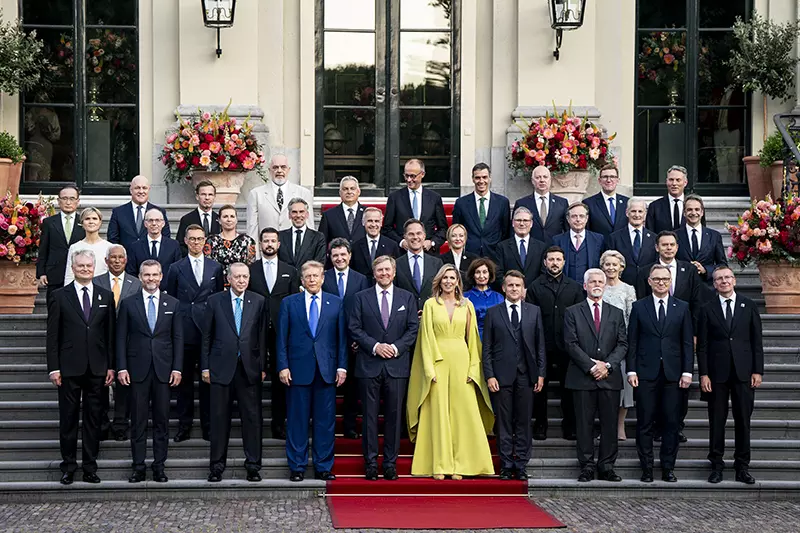- P.O. Box: 11482 Yaoundé, Cameroon; Headquarters: Efoulan, Yaoundé 3
- contact@caessinternational.org

In northern Poland, at Redzikowo, a U.S. missile defense base integrated into NATO’s system has a primary mission: countering the threat posed by Russian Iskander ballistic missiles, deployed just 250 kilometers away in the Kaliningrad enclave. This strategic positioning underscores the rising tensions along the eastern border of the Alliance.
As the NATO summit wrapped up in The Hague, Poland and other Eastern European countries anxiously awaited U.S. President Donald Trump's stance, particularly regarding the long-term commitment of the United States to the Alliance. In the end, Trump reassured the 31 member states by reaffirming Article 5 on collective defense and staying until the summit’s close. However, in return, he demanded a significant increase in European military spending: 3.5% of each state’s GDP by 2035, plus an additional 1.5% for civil-military expenditures.
This directive has propelled Europe into a phase of massive rearmament. As early as 2024, the European Union activated two key tools: a common defense strategy (EIDS) and a defense industry support program (EDIP). Major European defense companies are already benefiting from this push: BAE Systems (UK) for submarines, Leonardo (Italy) for combat helicopters, Airbus for military aircraft, Thales and Safran (France) for electronic systems, Dassault Aviation for the Rafale fighter jet, and Rheinmetall (Germany) for armored vehicles.
The EU is also banking on joint industrial ventures, such as the Eurofighter Typhoon—born of cooperation between the UK, Italy, Germany, and Spain—and the missile giant MBDA, jointly owned by BAE, Airbus, and Leonardo. Another example is KNDS, the Franco-German company developing the next generation of tanks to succeed the Leclerc and Leopard 2 models.
In line with this momentum, European Commission President Ursula von der Leyen launched the “ReArm Europe” plan in March 2025—a large-scale €150 billion program aimed at financing the purchase of European or Canadian-made weapons and stimulating €650 billion in national defense investments. These defense-related expenditures will now be excluded from budget deficit calculations.
Despite signals of continued transatlantic cooperation, Europe is preparing for a partial withdrawal of U.S. forces from the continent, a possibility mentioned by the Pentagon without specific details. And while Donald Trump did meet with Ukrainian President Volodymyr Zelensky on the sidelines of the summit, he made no promises of new military aid. When asked about the potential delivery of Patriot systems to Ukraine, he offered only a terse reply: “We’ll see. We need them too, and we’re already helping Israel.”